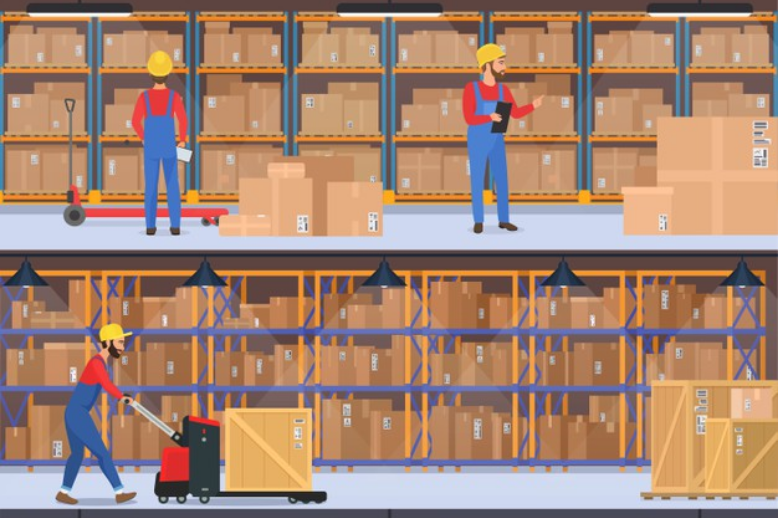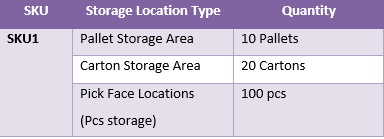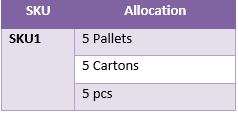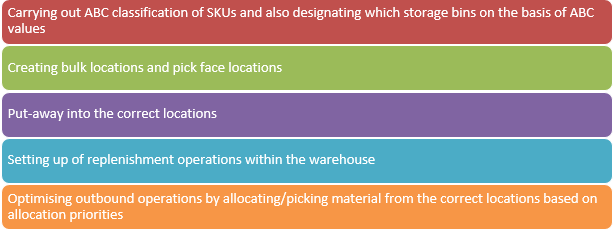
How to Optimize Warehouse Operations
Why is optimisation required?
Optimizing warehouse operations is essential to maximize the overall efficiency of a warehouse. Non-optimized operations often lead to increased lead times for operations such as Put-away, Picking, Loading, and Dispatch operations, which in turn can affect timely as well as the quality of the delivery.
How to optimize warehouse operations/How to increase warehouse throughput
The objective of warehouse optimization is to ensure that we increase the warehouse throughput in terms of the number of times items have moved per operator hour or the number of items that can be processed in a given time
To achieve this objective, the following steps need to be carried out:
- Decrease the steps/time required for operators to move the items
- Accurate movement of items within and out of the warehouse to avoid inaccurate movements and hence adding on extra time to correct the movements
To meet the objectives mentioned above, we need to identify the major functions that affect the overall efficiency of the warehouse and correct it. For example, to increase picking efficiency our put-away process needs to be corrected. In case, during put-away, SKUs are not placed in correct areas or bins, we will never be able to achieve picking efficiency.
The following three methods can be implemented to increase the warehouse throughput:

ABC Analysis based put-away
The first step to maximize the throughput of the warehouse is to optimize the put-away. Slotting fast movers at the right location during put-away has a direct impact on picking performance. This can be achieved by:

- For example, A and B classified products can be stored in high throughput bins, which are basically easily accessible locations at a convenient height. High throughput locations are also generally designated as pick face locations.
This will lead to improved picking performance as picking effort and time for fast movers are significantly reduced.
Replenishment
The second step to maximize the throughput of the warehouse is to identify the correct replenishment strategy. Accommodating the total inventory of fast movers in high throughput locations may not be possible, hence pick face locations and bulk locations can be designated, with replenishment from bulk locations to pick face locations at regular intervals. This involves:

Implementation of the points mentioned above results in the ability to handle a higher number of fast movers from pick face locations, which again leads to improvement in the warehouse picking performance and throughput. In addition, full Pallet replenishment minimizes inventory fragmentation at the bulk storage area.
Outbound Operation Optimization
The third step to maximize the throughput of the warehouse is to optimize the outbound operations starting from customer order allocation. Right break-up of customer order allocations across bulk locations and pick face locations minimizes picking trips and replenishment jobs. This can be handled by:

- Pallets to be allocated/picked from bulk locations
- Full boxes and Pieces to be allocated/picked from pick face locations
The above steps results in avoiding unnecessary breaking of pallets and fragmentation of inventory, minimizes picking trips, and Improves picking performance and warehouse throughput
For Example:
Consider the following storage pattern for an SKU:

The conversion factor for SKU1 is as follows:

In this case, if the ordered quantity is 555 pcs, the correct allocation would be:

This ensures that there is no fragmentation in the bulk (pallets and cartons storage area) storage areas, and the pick face locations remain adequately stocked. This also improves the overall picking efficiency as minimum handling units need to be moved out of the warehouse.
You can also watch the attached video to look at how to optimise warehouse operations.
Conclusion
Warehouse optimization to increase the throughput of the warehouse is a multi-step process that involves:

Managing all these steps without a WMS system is highly complicated and involves a high level of dependence on operators to carry out operations as defined.
In summary, a good Warehouse Management System should not only manage the operations within a warehouse but also provide the right tools to improve the efficiency and productivity of the warehouse. At the minimum the WMS should have, the following built-in operational optimization capabilities:

Check this video on Warehouse optimization techniques
